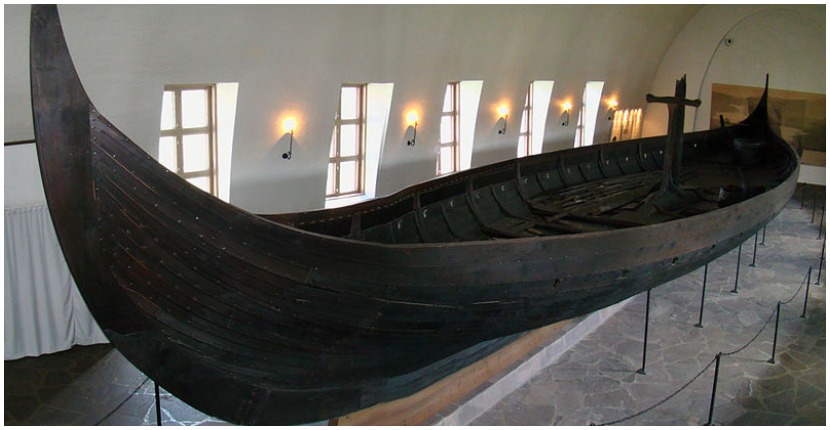One of Norway’s greatest archaeological finds is the Gokstad ship which takes us back to the late 19th century when two youngsters reportedly decided to have some fun by starting to dig in what people of the area called “the king’s mound.” A prominent mound indeed, its location was a farm in the Sandefjord municipality, slightly to the southwest of Oslo. The boys who started the dig in 1879 were just curious to see what they’d find.
Whether the boys had a gut instinct that they’d find something as spectacular as a well-preserved Viking ship, we cannot know, but they were digging in the right spot. The news of their find, what was later named the Gokstad ship, traveled fast. By early 1880, the new archaeological site was visited by representatives of the antiquity department at the University of Oslo, and the excavation process proceeded with more care and caution.
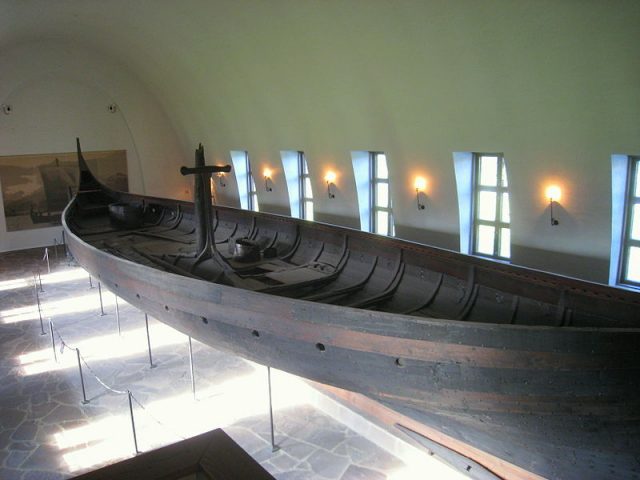
The vessel remnants turned out to be those of a ship from the Viking days, in quite good condition except for its upper parts and both the bow and the stern, which had rotted as they stuck out of the burial mound. The mound, made from clay and peat, would originally have been bigger, but its proportions were fairly large even at the time of the digging, some 16 feet high with a diameter measuring about 147 feet.
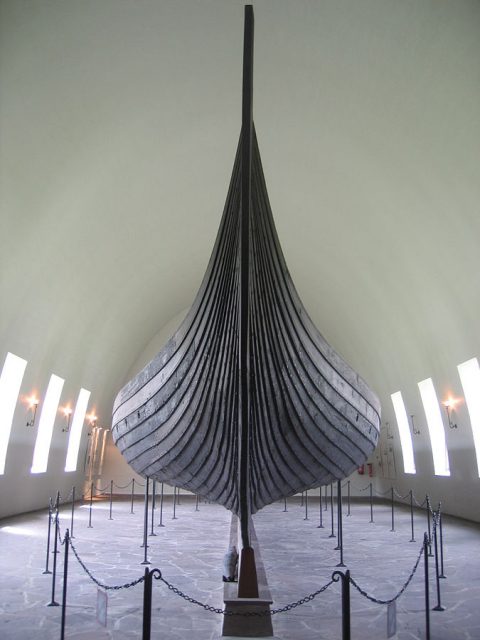
Made of oak, the remains of the Gokstad ship extended almost 52 feet wide and 75 feet in length. There are 16 oar mounts on each side of the vessel; along with the helmsmen, as well as the lookout, a crew of 34 in total would have sailed this Viking boat. The mission could have been trading affairs, or perhaps an adrenaline-filled Viking raid mission.
When a replica of it was made named Viking, it embarked on the journey across the Atlantic Ocean from Norway to the United States to be displayed at the 1893 Colombian Exposition in Chicago. The replica testified to the fantastic seafaring capabilities of the Viking vessel, and it continues to rest on display close to Chicago.
The original vessel retrieved from the burial pit underwent extensive restoration. The artifact is nowadays the most admired piece that visitors can see at the Viking Ship Museum in Oslo.
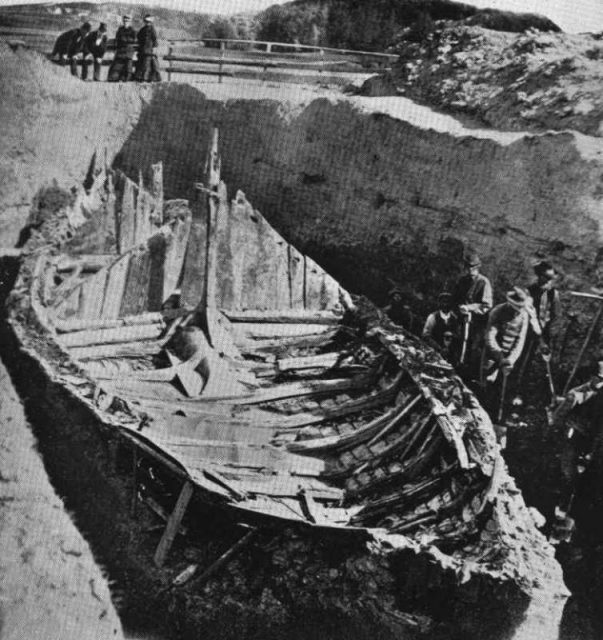
Perhaps more fascinating than the vessel finding is the fact that it was a burial site, with a chamber where, as archaeologists concluded, a very prominent person from the Viking times was entombed. Archaeologists believe this was a man of power because of accompanying artifacts buried in his grave.
A sumptuous tapestry interwoven with silk and gold thread decorated the chamber where the remains of the Gokstad man were found. The man was laid to rest on an elegant bed inside the burial chamber–it is assumed he would have been buried with weapons and some jewels too, but these have probably been lost to grave robbers.
The Gokstad ship was deposited in the burial pit sometime around 900 A.D., and analysis of the skeleton shows the Gokstad man was middle-aged, probably in his 50s, when he died a violent death, receiving a knife wound in his right thigh.
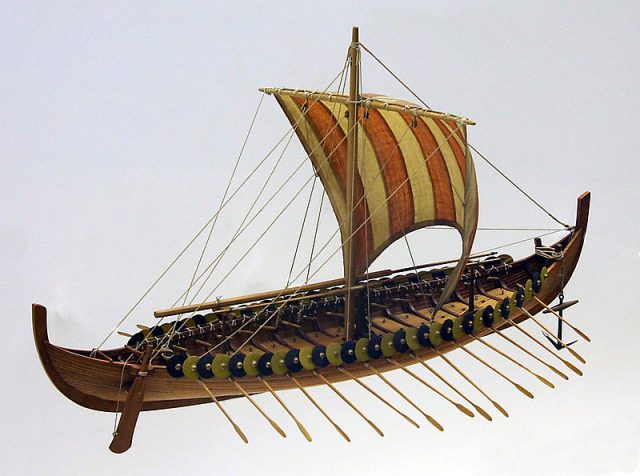
Two more injuries have been detected on his legs, which suggest the man was hurt in a battle. That the man received such high praise, being buried with a huge Viking vessel, indicates he was an affluent person of power, perhaps even somebody with a royal lineage, but his identity has not been resolved.
As the vessel was unearthed, 32 shields painted yellow and black attached to its sides resurfaced as well. Archaeologists also identified the leftovers of the ship’s sail, remnants of white woolen cloth with strips of red. While precious possessions such as gems and jewels had been emptied from the site, as the UiO Museum of Cultural History writes, there were still other grave goods, including “a gaming board with counters of horn, fish-hooks, and harness fittings made of iron,” among others.
More findings included “12 horses, eight dogs, two goshawks and two peacocks,” the latter of which could have even been collected as war trophies, the museum page writes.
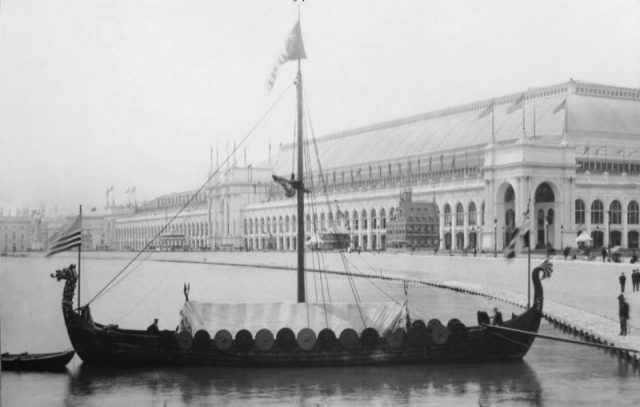
A later discovery of a large marketplace not very far from where the Gokstad ship and man were found indicates that the wider area was a well developed trading hub of the Viking days. The artifacts found in the Gokstad burial mound also hint that even if the Gokstad man weren’t any kind of ruler or royal, he would have at least been a wealthy tradesman. His burial ship would have been produced some 10 years before he died, around 890 A.D.
Related story from us: Vikings had cats on board their ships as they set sail to conquer the world
When Viking enthusiasts check out the legendary ship in Oslo’s Viking Ship Museum, they will notice there is another amazing Viking vessel called the Oseberg ship close to the Gokstad one. This second ship was reportedly discovered in the early 20th century together with the skeletons of two women.
